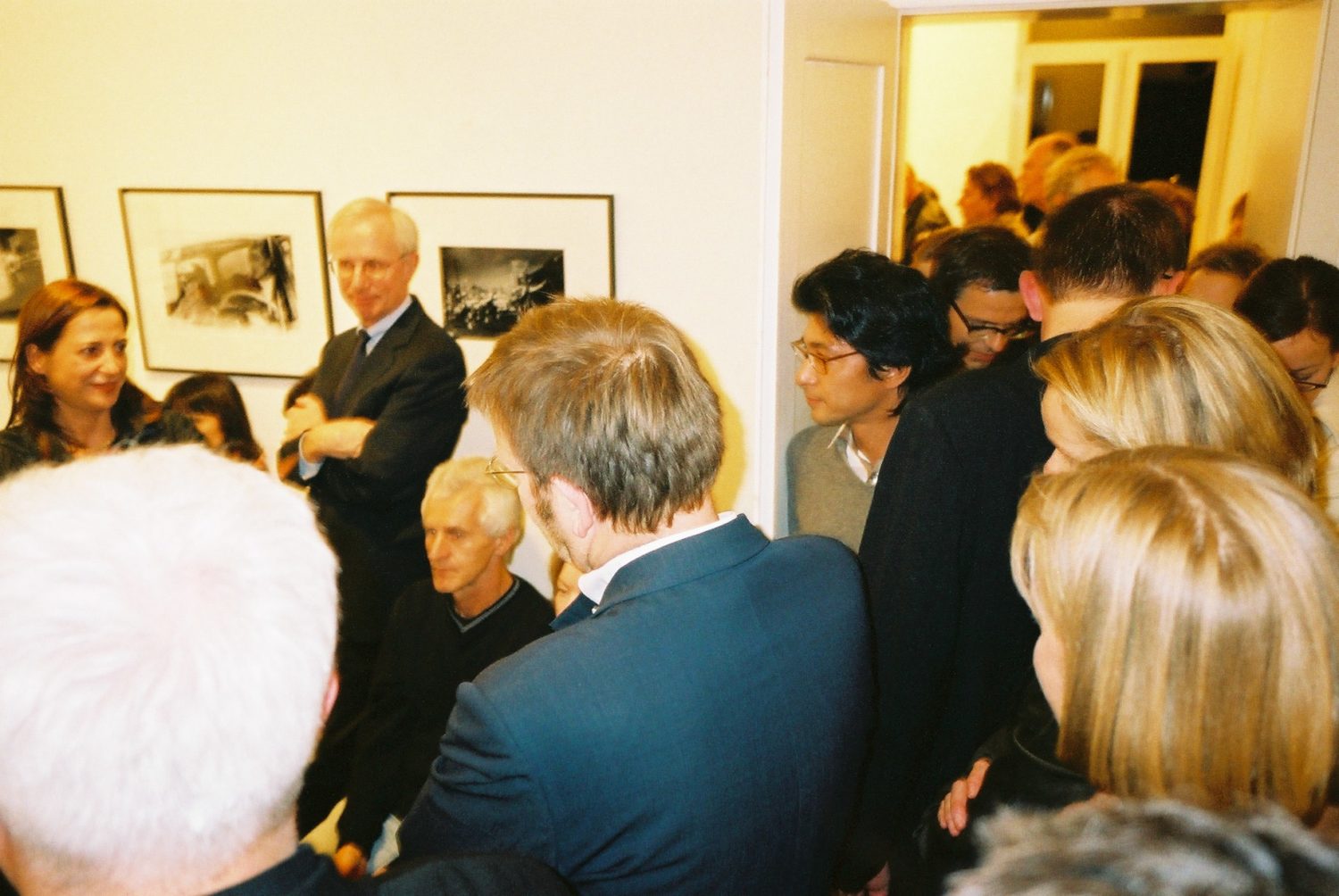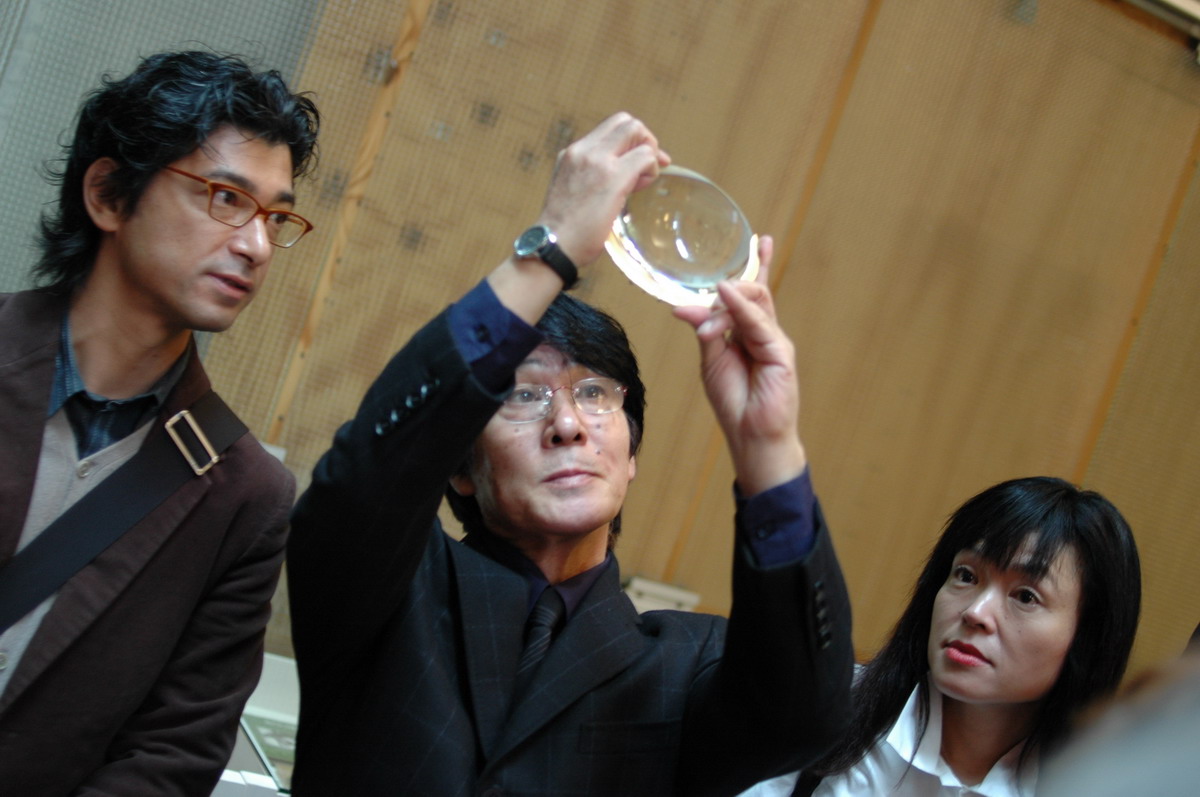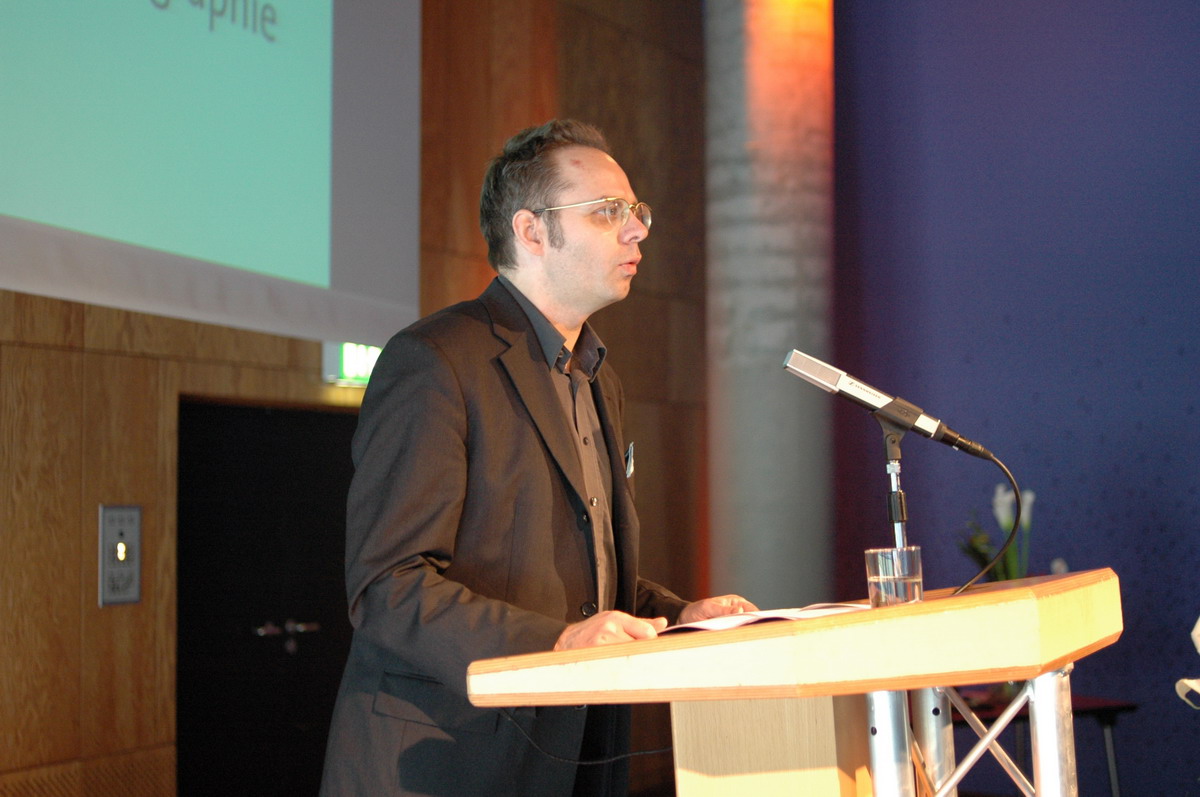COLOUR PRINTS AND VINTAGES
Daido Moriyama
October 28th 2004 – January 28th, 2005
Daido Moriyama is one of the most important Japanese photographers to emerge after 1945. Both within and outside of Japan, his work has played a central role in establishing Japanese photography as one of the most creative movements in the history of photography. In the “Provoke Era” in particular – a period of intense photographic activity at the end of the 1960s and in the early 1970s in Japan – Moriyama made a crucial contribution to the development of photography and continues to be a considerable influence for younger Japanese photographers to this day.As was the case with many artists of his generation, Moriyama found himself searching for the identity of Japanese society. Indeed, a society moving within an area of conflict between centuries-old traditions and the mighty influence of the West, and the USA in particular. The question as to the basis for society and his own existence took him and his camera to the grey areas and fringes of Japanese life: into strip clubs, the backrooms of cheap Kabuki theatres and to the bars frequented by American soldiers; but most of all, his work took him to the streets and on journeys through rural Japan. In doing so, his approach is not analytically or conceptually motivated. In the search for marginal existences and fractures in society, he unremittingly coasts along Japan’s streets and takes photographs without even using the viewfinder, thus producing shots of intense emotional expression. He often takes photographs on the move, and in doing so adopts the position of a “stray dog”, which is also the title of his most well known photographic work. His images are deliberately coarse-grained, out of focus, canted, cropped and characterised by high contrasts.Daido Moriyama developed his raw and expressive style with portraits, street scenes, nudes and the objects of everyday culture both under the influence of the Japanese avant-garde, such as photographer Shomei Tomatsu and the theatre director Shûji Terayama, as well as American art and in particular the photographic works of William Klein and the graphic art of Andy Warhol.
Even though Moriyama’s photography depicts a Japanese society that was rapidly changing as American influence took hold, Moriyama has never viewed himself as a political photographer – in contrast to his colleagues of the “Povoke Era”. In fact, his photographs are always directly related to his own life.
Daido Moriyama was born in Osaka in 1938, and initially studied design before undertaking studies in photography in Kobe. In 1961 he moved to Tokyo, to join the VIVO group (Tomatsu, Hosoe, etc.), yet the group disbanded at the same time and Moriyama became an assistant to Eikoh Hosoe. In 1964 he met Takuma Nakahira, with whom he began an intensive artistic friendship. In 1968 his first book was published, entitled “Japan: A Photo Theater”. In 1969, his work was published in the 2nd issue of “Provoke” magazine. Regarding the magazine, Nobuyoshi Araki commented: “It was like an explosion within Japanese photography.” In 1971, Moriyama travelled to New York with the designer Tadanoori Yoko. Between 1972–74 he published several books, including “Farewell Photography”, in which he explores the limits of the medium.
He participated in the “New Japanese Photography” exhibition held at the MOMA in New York. Between 1975–78, Moriyama became an instructor in photography and he opened the CAMP gallery in Tokyo. Between 1979–81, drugs and depression hindered his production of photographic work. In 1982 Moriyama returned to photography, and some new series were born. Several books were published, including “The Time of a Dog” and the written work “Memories of a Dog”. In 1987, the Room 801 gallery was opened. Since the 1980s, Daido Moriyama has been taking part in exhibitions about Japanese photography, both in Japan and abroad. The 1990s saw the publication of the series “Daido Hysteric”, and he began to experiment with Polaroids.
Besides his black and white photographs Galerie Priska Pasquer is glad to exhibit a group of colour photographs by Daido Moriyama for the first time ever.
Daido Moriyama is one of the most important Japanese photographers to emerge after 1945. Both within and outside of Japan, his work has played a central role in establishing Japanese photography as one of the most creative movements in the history of photography. In the “Provoke Era” in particular – a period of intense photographic activity at the end of the 1960s and in the early 1970s in Japan – Moriyama made a crucial contribution to the development of photography and continues to be a considerable influence for younger Japanese photographers to this day.As was the case with many artists of his generation, Moriyama found himself searching for the identity of Japanese society. Indeed, a society moving within an area of conflict between centuries-old traditions and the mighty influence of the West, and the USA in particular. The question as to the basis for society and his own existence took him and his camera to the grey areas and fringes of Japanese life: into strip clubs, the backrooms of cheap Kabuki theatres and to the bars frequented by American soldiers; but most of all, his work took him to the streets and on journeys through rural Japan. In doing so, his approach is not analytically or conceptually motivated. In the search for marginal existences and fractures in society, he unremittingly coasts along Japan’s streets and takes photographs without even using the viewfinder, thus producing shots of intense emotional expression. He often takes photographs on the move, and in doing so adopts the position of a “stray dog”, which is also the title of his most well known photographic work. His images are deliberately coarse-grained, out of focus, canted, cropped and characterised by high contrasts.Daido Moriyama developed his raw and expressive style with portraits, street scenes, nudes and the objects of everyday culture both under the influence of the Japanese avant-garde, such as photographer Shomei Tomatsu and the theatre director Shûji Terayama, as well as American art and in particular the photographic works of William Klein and the graphic art of Andy Warhol.
Even though Moriyama’s photography depicts a Japanese society that was rapidly changing as American influence took hold, Moriyama has never viewed himself as a political photographer – in contrast to his colleagues of the “Povoke Era”. In fact, his photographs are always directly related to his own life.
Daido Moriyama was born in Osaka in 1938, and initially studied design before undertaking studies in photography in Kobe. In 1961 he moved to Tokyo, to join the VIVO group (Tomatsu, Hosoe, etc.), yet the group disbanded at the same time and Moriyama became an assistant to Eikoh Hosoe. In 1964 he met Takuma Nakahira, with whom he began an intensive artistic friendship. In 1968 his first book was published, entitled “Japan: A Photo Theater”. In 1969, his work was published in the 2nd issue of “Provoke” magazine. Regarding the magazine, Nobuyoshi Araki commented: “It was like an explosion within Japanese photography.” In 1971, Moriyama travelled to New York with the designer Tadanoori Yoko. Between 1972–74 he published several books, including “Farewell Photography”, in which he explores the limits of the medium.
He participated in the “New Japanese Photography” exhibition held at the MOMA in New York. Between 1975–78, Moriyama became an instructor in photography and he opened the CAMP gallery in Tokyo. Between 1979–81, drugs and depression hindered his production of photographic work. In 1982 Moriyama returned to photography, and some new series were born. Several books were published, including “The Time of a Dog” and the written work “Memories of a Dog”. In 1987, the Room 801 gallery was opened. Since the 1980s, Daido Moriyama has been taking part in exhibitions about Japanese photography, both in Japan and abroad. The 1990s saw the publication of the series “Daido Hysteric”, and he began to experiment with Polaroids.
Besides his black and white photographs Galerie Priska Pasquer is glad to exhibit a group of colour photographs by Daido Moriyama for the first time ever.













